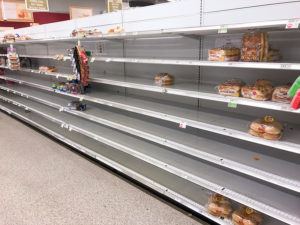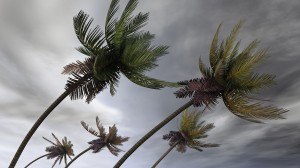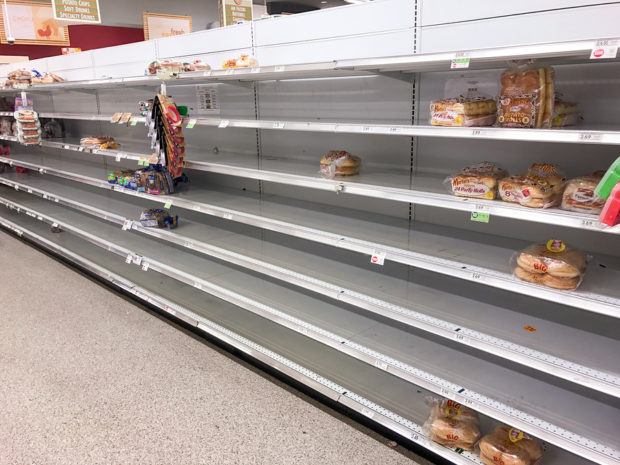
With news that Hurricane Matthew could hit Florida and nearby states by Friday as a Category 4 storm, the property/casualty insurance industry scrambled on Thursday to assess and prepare for the storm to come.
The storm has already racked up plenty of damage. As catastrophe modeling firm AIR Worldwide noted in an Oct. 6 bulletin, Matthew has already torn through Haiti and part of Cuba (at Category 3 strength or higher) over several days, and was trouncing through the Bahamas on the way to Florida at Category 4 strength. Forecasts said it would remain at that level as it neared Florida’s east coast. Florida was expected to face hurricane conditions later Thursday and through Friday.
The storms could cause commercial insured losses in the $30 billion range due to its current track and velocity, and “has a potential to be a market changing event for the commercial insurance industry,” Gary Marchitello, head of property broking, Willis Towers Watson said in prepared remarks.
He added that “if history is any guide, there is the potential that insured losses could be even higher than initial estimates.”
Insurers such as Nationwide and CNA made announcements on Thursday that their representatives and agents were prepared to assist as Matthew approached the United States. The National Association of Mutual Insurance Companies issued a statement from President and CEO Charles Chamness asserting that NAMIC members are preparing for the storm itself and its aftermath.
“NAMIC member companies in the affected states have been working diligently to prepare for this storm and its aftermath, and they are ready to start the claims process as quickly as possible to help their policyholders begin the process of recovery,” Chamness said.
Chamness also encouraged “everyone to pay attention to evacuation orders, stay safe and look out for one another.”
 Fitch Ratings and Standard & Poors each separately warned that insurers and reinsurers alike will be seriously tested by the damage that Matthew was expected to bring.
Fitch Ratings and Standard & Poors each separately warned that insurers and reinsurers alike will be seriously tested by the damage that Matthew was expected to bring.
Standard & Poor’s noted that 15 catastrophe bonds will be exposed to Hurricane Matthew. Those bonds, issued to provide protection from hurricanes to a number of cedents, “could incur losses as a result of Hurricane Matthew,” S&P said. At the same time, the ratings agency said its ratings on those issues remain unchanged, and it will monitor the situation as it develops.
Significant Challenges For Florida Homeowner Insurance Market
Christopher Grimes, director in insurance at Fitch, said the storm will present a significant challenge for the Florida Homeowner Insurance market.
“Hurricane Matthew will test Florida’s previously untested homeowner specialist insurers if there are significantly sizeable losses,” Grimes said in prepared remarks. “With heavy reliance on reinsurance in the Florida property insurance market, traditional and collateralized reinsurance and catastrophe bond markets could also see substantial losses.”
A.M. Best noted the storm was also supposed to potentially affect states north of Florida. The ratings agency said that many of the companies it covers that do business in Florida and the region have “broad business profiles with product and geographic diversification,” and are “also in a much stronger position to absorb this catastrophic loss than are dedicated Florida property writers.”
A.M. Best added that expects the already stressed National Flood Insurance Program and the Florida Hurricane Catastrophe Fund to be front and center in fielding claims. In a hopeful note, A.M. Best added the FHCF “has not endured a major event in recent years and has seen its liquidity improve over that time.”
Millions of Homes Vulnerable to Property Damage
CoreLogic, meanwhile, estimated that more than 950,000 homes were at risk from storm-related property damage in Florida if Hurricane Mathew remains at Category 4 strength. Similarly, if those conditions hold, CoreLogic said that over 287,200 homes in South Carolina, more than 198,100 homes in North Carolina and nearly 138,000 homes are vulnerable to Matthew-related damage.
AIR Worldwide pointed out that “residential construction in Florida is dominated by wood-frame and masonry construction,” the latter of which is better equipped to deal with high winds.
Florida’s east coast faced several hurricanes in 2004, including Frances, Ivan and Jeanne, and many homes saw damage to roof covers. AIR Worldwide said that manufactured homes risk “significant” damage during hurricanes, as was the case in 2004.
All parties said they’d continue to monitor Hurricane Matthew as it progresses.





















 What to Expect in 2026: U.S. P/C Results More Like 2024
What to Expect in 2026: U.S. P/C Results More Like 2024  Why the Middle Market Matters and How Insurers Can Capture It
Why the Middle Market Matters and How Insurers Can Capture It  Five AI Trends Reshaping Insurance in 2026
Five AI Trends Reshaping Insurance in 2026  Underwriter, Actuary Fears of AI Drop; Work Needed on Collaboration
Underwriter, Actuary Fears of AI Drop; Work Needed on Collaboration 










